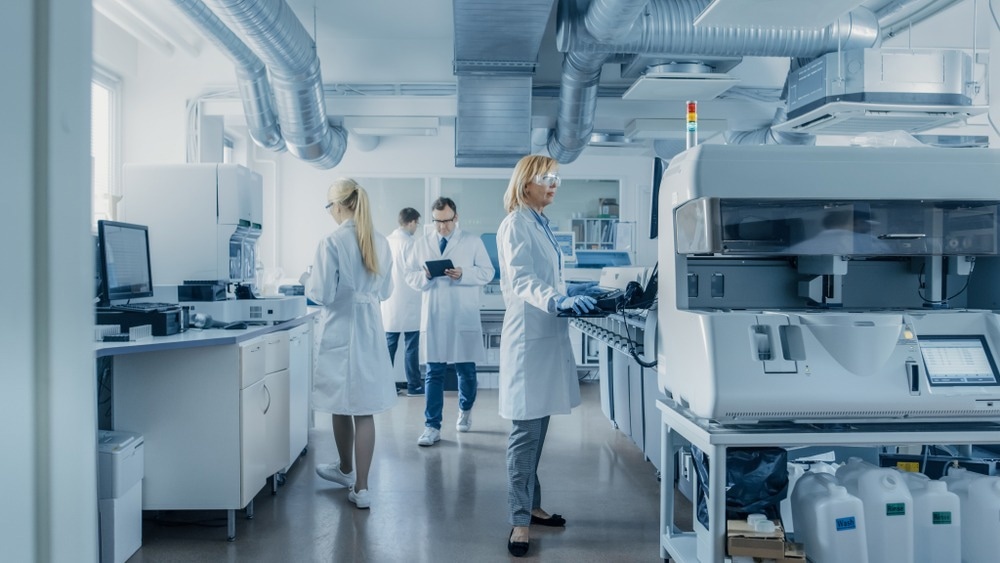In a paper recently published in the journal Materials Today Energy, researchers reviewed several printing materials and techniques in photocatalysis applications. They also discussed the impact of post-processing modification on the catalytic performances of photocatalytic substrates and integral printing, along with future applications of three-dimensional (3D) printing design methods.

Study: Review of 3D printing in photocatalytic substrates and catalysts. Image Credit: Gorodenkoff/Shutterstock.com
3D Printing Overview
3D printing uses an existing object to generate its 3D scanning reverse model or prepare a prototype through the creation of geometric information. In comparison to traditional manufacturing, this technology can achieve a wide range of material molding and processing while focusing on complexity, precision, and customization of the designed products. The different types of 3D printing include fused deposition modeling (FDM), selective laser melting (SLM), stereolithography (SLA), and direct ink writing (DIW). Both FDM and DIW are extrusion-based methods, while SLM is powder-based.
Solar energy can be utilized for photocatalysis with semiconductors that convert solar energy to chemical energy, thus being widely useful in photocatalytic technologies. However, photocatalytic materials have complex structures and hence cannot be manufactured by traditional methods. Therefore, 3D printing can overcome these drawbacks and quickly generate the required structures at a lower cost.
Photocatalytic Materials
A photocatalytic substrate is a place where a catalytic reaction takes place under the action of external light and the photocatalyst, where the reactants are either oxidized or reduced and converted into other materials by the photocatalyst.
A recent trend shows increased efforts to enhance the photoactivity of the photocatalyst by achieving the perfect combination while controlling the micromorphology of the materials as the catalytic performance is highly influenced by the structure of the photocatalyst. Likewise, it is also crucial to choose the right precursor material during 3D printing as it may inhibit the separation and evolution of the catalysts. Polymers are the most widely used precursors.
For FDM, integral printing of polylactic acid (PLA) and TiO2 exhibited a 70% increase in photocatalytic efficiency. The DIW printing obtained a porous and reusable woodpile heterogeneous catalytic system with remarkable mechanical strength, recyclability, and catalytic activity. Moreover, in SLM printing, metallic materials can be ideal framework materials for monolithic catalysts and are well known in electrochemical applications due to their electrochemical conductivities. SLA printing can be used to produce integral monoliths using metal organic frameworks (MOFs) to enhance catalytic performances.
Substrate Materials
The photocatalytic substrate materials can be categorized into organic and inorganic types considering their adhesion properties and chemical composition. Additionally, the substrates should have a large surface area while increasing the catalyst’s stability, as well as possess strength in order to prevent the catalyst from dislodging from its surface. Finally, the substrates’ resistance to strong radical degradation is also necessary.
Polymers, although easy to manufacture and also lightweight, inexpensive, and chemically inert, are used in FDM printing but they have a low surface area and glass transition temperature and hence cannot be mixed with other materials for co-printing. Carbon substances are commonly used for their larger surface area and better adsorption properties. Moreover, zeolites have received significant attention due to their high surface area, well-ordered molecular pore structure, and the guest molecules’ selective shape. Other substrate materials used are ceramics and glass substances.
Photocatalytic Devices and the Structures of Substrates
The two types of commonly used 3D-printed photocatalytic devices are those with an integrated reactor and those with a reagent. These devices consist of printed-in catalysts that have components for spectroscopic and electrochemical analyses, which can be used for purifications, crystallizations, and syntheses.
It is important to design the catalytic substrate in order to optimize the performance of the 3D-printed photoreactor. The photocatalytic performance can be influenced by the substrate structure and thus various structures such as honeycomb structures, lattice structures, fractal structures, foam structures, and topology structures, have been used to tune the substrate performance in relation to the catalyst’s reaction capacity and the material transport and optical efficiency.
Conclusions
To summarize, the researchers reviewed and discussed the importance of 3D printing in the design and manufacture of photocatalytic materials, with its impact spanning from model construction, functional prototypes, and up to digital manufacturing. While traditional techniques in materials design depend on chemical composition and structure, 3D printing initially emphasizes the material properties coupled with digital designing, thereby optimizing the internal geometry and material structure. This ultimately improves the catalytic efficiency of the materials.
Moreover, the scope of the substrate’s applications can also be expanded by incorporating different materials such as polymers, zeolites, carbon materials, glasses, and ceramics. However, the catalytic performance may be affected by the design of supports due to lower surface areas and can be optimized further.
Disclaimer: The views expressed here are those of the author expressed in their private capacity and do not necessarily represent the views of AZoM.com Limited T/A AZoNetwork the owner and operator of this website. This disclaimer forms part of the Terms and conditions of use of this website.
Source:
Li, Nannan, Tong, Kai, Yang, Lijun, Du, Xiaoze, Review of 3D printing in photocatalytic substrates and catalysts, Materials Today Energy, 2022, 101100, ISSN 2468-6069, https://www.sciencedirect.com/science/article/abs/pii/S2468606922001587?via%3Dihub